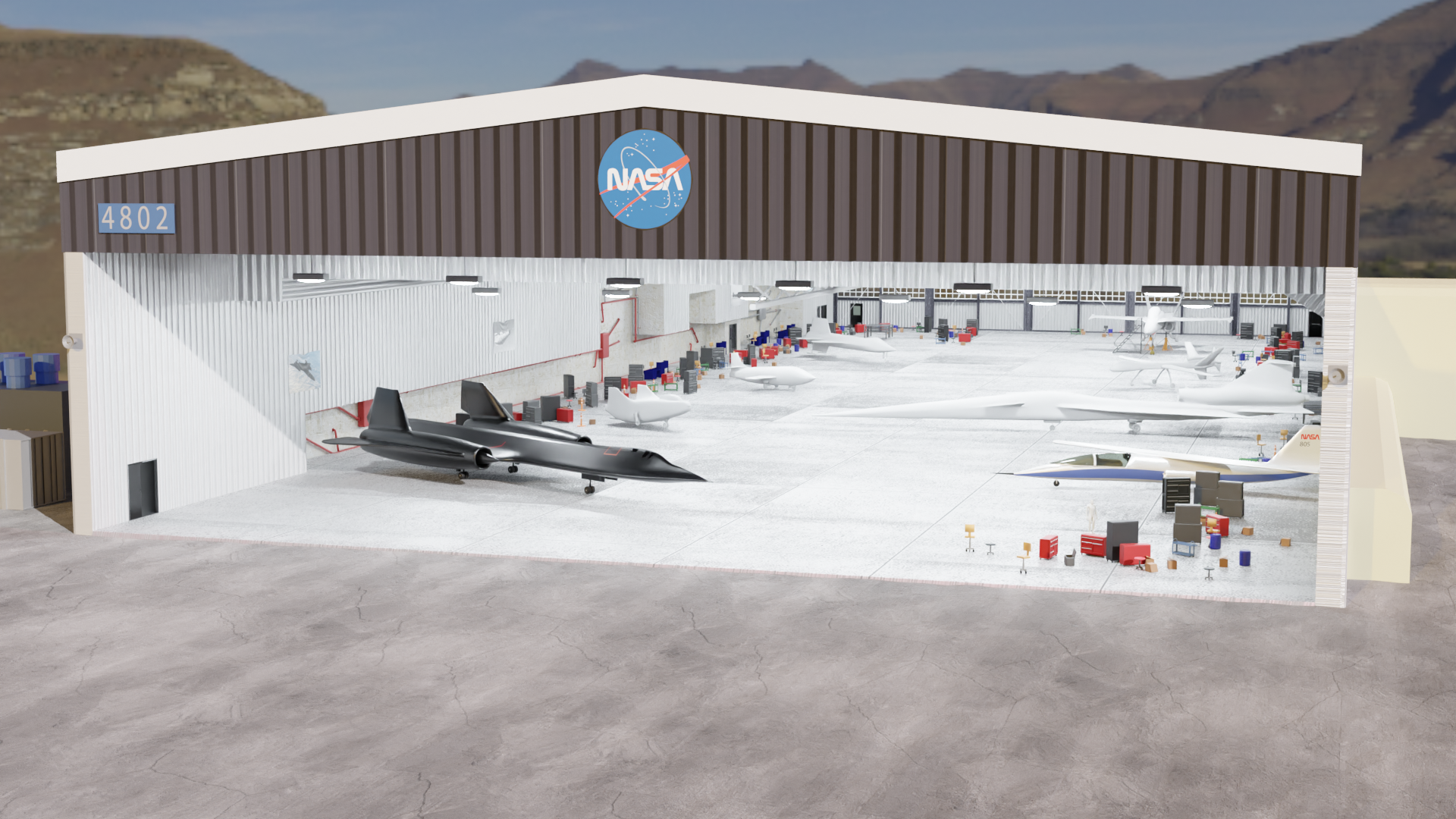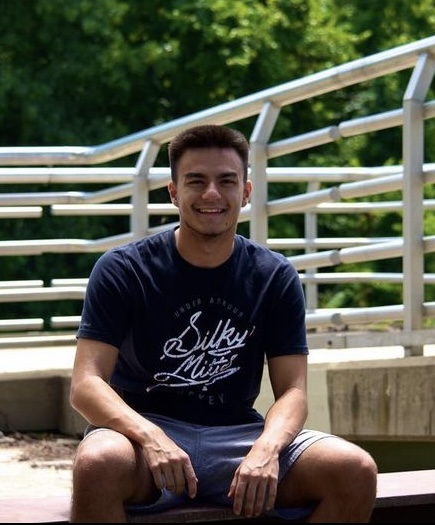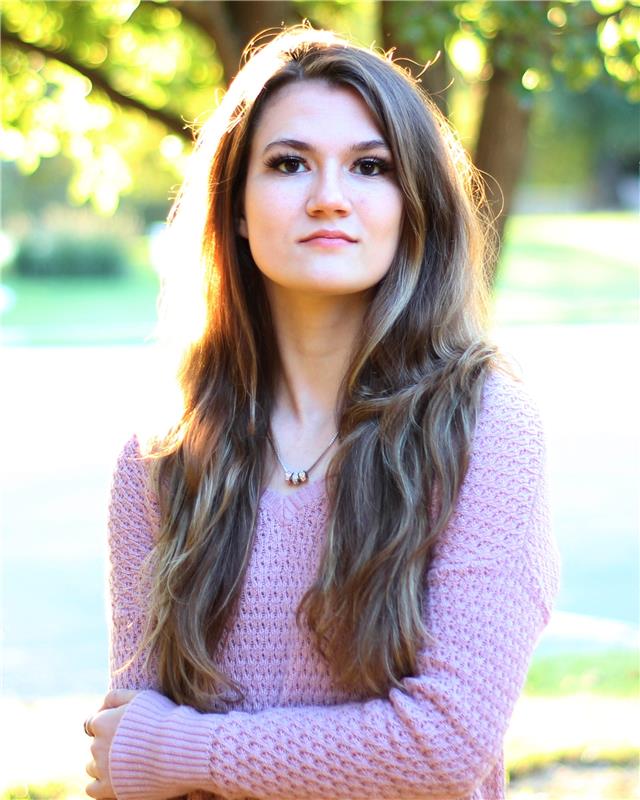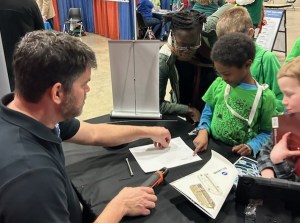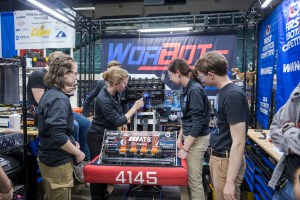NASA interns are building a future STEM workforce that is diverse and well-rounded while they gain real world experience. At NASA’s Armstrong Flight Research Center in Edwards, California, interns are working on the cutting edge of flight technology through 3-D design technology. In celebration of Internship Awareness Month, this feature will introduce three Armstrong interns advancing technology and changing the future.
Seth Usher
NASA Armstrong simulations engineering intern Seth Usher has always had a passion for creation.
“I love bringing concepts to life and I find interest in the development of games as a medium,” Usher said. “I love the freedom and fulfillment that game creation gives me.”
His interest in game development and creation led him to join simulations engineering, specifically to support the multi-generational Greater Heights project that interns have been evolving and passing to the next student to do the same since 2020. Greater Heights is a virtual experience that simulates Neil Armstrong’s test flights on the experimental, rocket-powered X-15 aircraft, and provides a narrative experience to users who will one day access the simulation through the NASA website.
Usher is modeling a 3D scene for the main menu that will give users a life-like look at a hanger with multiple historic aircraft. Modeling the hangar has become one of Usher’s favorite parts since he learned about many of NASA Armstrong’s historic aircraft.
“Being able to bring to life a part of history and what someone’s experience was like, and then be able to share that and show others, is something that fascinates me,” Usher said.
Usher is excited to continue to support the advancement of Greater Heights and has enjoyed the opportunity to be the newest intern contributor.
“I pursued NASA because it has always strived and successfully made advancements for society as we know it. I would be proud and happy to know I was a part of something greater,” Usher said.
To learn more about the Greater Heights project click here.
Karen Mae Baldonado
Since sitting in her AP Physics class in high school, Karen Mae Baldonado was confident she would one day work at NASA.
Baldonado designed the entry, descent and landing sequence, heat shield design, and created the Concept of Operations, which describes the type and sequence of information in a mission, using Python software, part of NASA’s Titan mission.
Now Baldonado is an intern at NASA Armstrong working with Fiber Optics Sensing System (FOSS) team and technology transfer office. The FOSS system measures stress, temperature distribution, liquid levels, shape changes, other engineering measurements, and can take up to 2,000 measurements on a single fiber the size of a human hair. Baldonado is creating 3D models and drawings to further design, fabricate, and test the FOSS units.
Baldonado appreciates the experience she has been able to gain through her internships with NASA and how it has taken her above and beyond what she has previously learned in her education.
“I’ve learned about structures in undergrad, but there’s still so much for me to learn with this project. I feel like I’m becoming a more well-rounded engineer,” Baldonado said.
Outside of the improvement to her critical engineering, Baldonado has had the opportunity invest time and connect with other members of her community.
“I plan to continue helping my communities and representing those with similar identities to me. There’s definitely a lot to say about being a first-generation Asian-American woman, and there’s a lot more when you add ‘in STEM’ to the mix,” Baldonado said.
In addition to her NASA internship, she is a mentor at The City College of New York’s Society of Women Engineers club and volunteers at STEM Kids NYC to teach children STEM skills not taught in schools to help set them up for a better life.
“I went through a lot to get to where I am today, so I just hope I can do something to make life easier for those interested in this career path.”
Antonia Pearl
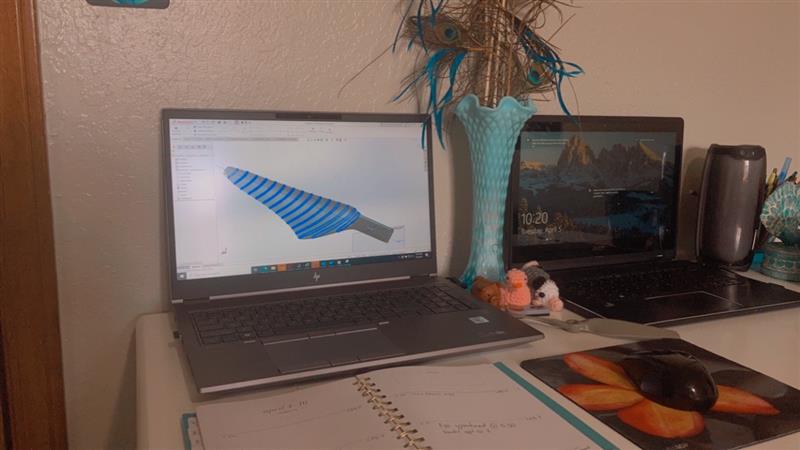
One of Antonia Pearl’s favorite things about NASA is the level of focus and passion that the teams have on multi-year projects and their ability to stay consistent. Pearl is inspired and passionate about her current internship supporting the Prandtl Propellor Project.
One of Pearl’s main interests in engineering is research and design, making her spot on this project a perfect match.
“I am excited to learn things about aerodynamics and expanding my skillset of coding and analysis,” she said. “I have already been able to use my previous experience with SolidWorks, a 3d design software, to explore different methods of modeling objects such as wings and propellors with complicated surfaces.”
Pearl’s main roll will be to create stock propellors and implement matrix laboratory (MATLAB) code to refine the propellors according to certain mathematical and aerodynamical constraints.
She has a passion for supporting this project, but Pearl wants to see when the propellor is ready for testing.
“I am excited to hopefully be able to see the propellor manufactured during my time as an intern and I hope to use the skills I have been building up from this internship in my continual education,” Pearl said.
This internship has solidified Pearl’s interest in aerospace and aerodynamics, and she is now considering pursuing a master’s degree in Aerospace Engineering after completing her Mechanical Engineering degree.





























